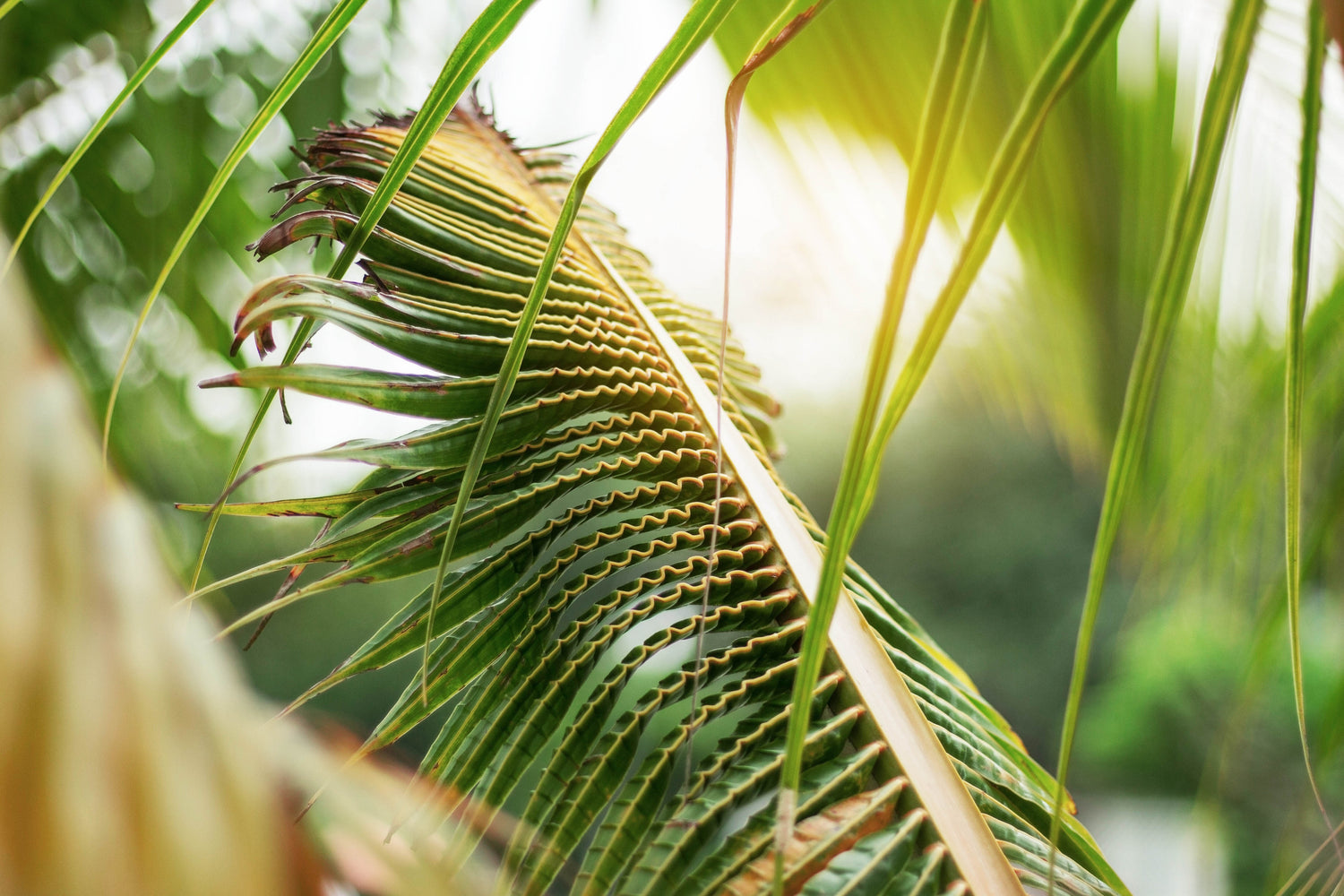Boron Deficiency in Coconut
Boron is a trace element required in a very small quantity, but it is a vital micronutrient for coconut palms. Though its requirement is very low, it is essential for physiological processes like cell division, cell wall formation, and the transport of sugars. Its deficiency may cause several growth and productivity issues, as it impacts the plant's ability to form healthy tissues and fruits.
Symptoms of Boron deficiency in Coconut
Symptoms appear on the innermost spindle leaf, inflorescence, and fruit. In severe cases, many spear leaves may be unopened.
Symptoms on Leaves
- Leaf symptoms appear as wrinkling of leaves
- Leaflet tips bend sharply.
- The Leaves fail to split into leaflets.
- Leaves will have a zigzag and serrated appearance.
- Causes Crown choke disorder, in which newly emerging spear leaves fail to open normally.
- Necrosis on the tips of older leaves may turn brown and die.
- Complete deformation of younger leaves
- Curling or crinkling appearance of the leaves.
- The spear leaf may appear stunted or deformed.
Symptoms on inflorescence and nuts
Boron deficiency also occurs in inflorescence and fruits, resulting in poor nut setting, button shedding, and immature nut fall.The fruits may be underdeveloped, deformed, fail to mature, and fall prematurely .The inflorescence and nuts become necrotic and barren nuts are produced.
- Poor flowering leads to a reduction in the number of flowers
- Inhibiting proper pollination affects coconut production.
- Stunted growth, especially in young palms due to Boron deficiency.
- Boron deficiency can reduce the growth rate of the coconut palm.
- The vegetative growth becomes slow, and the overall size of the palm can be smaller.
- Boron deficiency may lead to poorly developed root systems, that adversely affect plant growth.
Major causes of Boron deficiency in Coconuts
Boron deficiency is caused due to inadequate boron in the soil. It may be caused by soil drying and high soil pH, while temporary boron deficiency is caused by heavy leaching.Sandy soils or soils with high calcium and magnesium levels react with Boron and make it unavailable to plants.
- Excess watering and heavy rain can leach boron out of the soil.
- In alkaline soils that possess high pH can lead to boron deficiency.
- Rich organic matter or compost can interfere with boron availability, particularly if the organic material contains calcium or magnesium in excess.

How to rectify Boron deficiency?
- Regularly monitor the coconut palms for symptoms of Boron deficiency and conduct periodic soil tests to ensure that nutrient levels are balanced and sustainable.
- Apply Boron in the form of borax (sodium tetraborate) or soluble boron fertilizers. Application of borax/sodium tetraborate 0.2% (2 g/l of water), (75-100 ml/seedling), borax/ sodium tetraborate/octaborate 15-20 g/plant, depending on the age and size of the palm.
- Dilute the boron fertilizer in water and apply it on young, newly emerging leaves.
- Soil application can also be done by broadcasting boron fertilizer around the base of the palm.
- Adopt proper irrigation practices that prevent waterlogging and leaching of Boron.
- To avoid lock-up of boron in the soil, ensure balanced application of composts or manure.
- In alkaline soils, appropriate ameliorants may be added to adjust the pH near to neutral or slightly acidic in range (6.0-7.5)
Boron is a critical nutrient for coconut palms, and a deficiency can lead to a range of growth and productivity issues. Correction of boron deficiency involves proper diagnosis, soil testing, and targeted fertilization. Maintaining optimal soil conditions and avoiding over-irrigation can help ensure that coconut palms have adequate access to boron and other essential nutrients.
